Journey through the understanding of particle physics - Four
In my previous post the reader was introduced to Quantum Field Theory, QFT, which describes how the fundamental blocks of nature are not corpuscular but consists of fields.
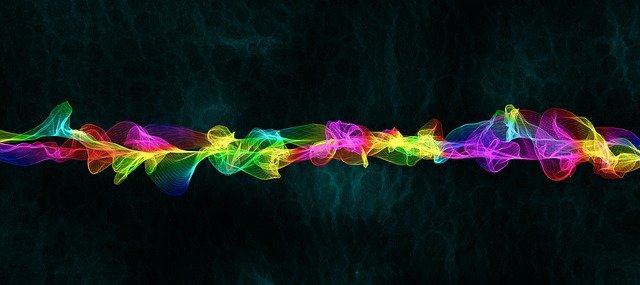
[Image Credits - Pixabay]
We learned that each one of the 12 known particles and the 4 forces are associated with distinct 12+4 fields (we still omit here the Higgs field which will be described in a future post).
We also discovered that energy can only be injected into a field in discrete values called quanta. This minimum energy takes the form of a minimum energy/amplitude wave and this very wave is what we call a "particle".
For example, the electron corresponds to a minimum energy wave in the electron field.
Fields Interaction
All of the above is extraordinary in itself and defies the imagination, however the world around us wouldn't be interesting if these fields couldn't interact with each other.
In such a world all particles would be massless and travel at the speed of light in all directions without collisions, radiation, annihilation and combination.
In other word, that hypothetical universe would be free of any chemistry and nothing would ever happen.
Fortunately for us fields do interact and this results in many interesting phenomena which creates the beautiful complexity of the universe.
Some of these phenomena will be described in layman terms in this post.
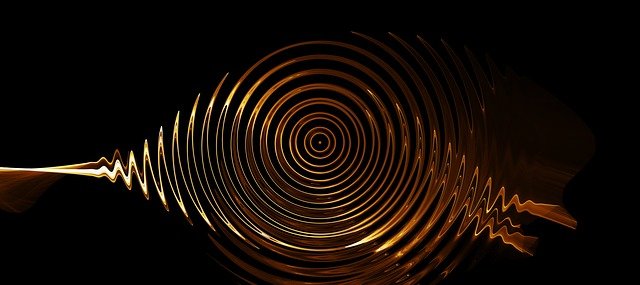
[Image Credits - Pixabay]
One has to remember that each field permeates every point of the universe (as far as we can tell) and that, in this way, all fields completely overlap each other.
Each field can interact with one or more other field by transfer of energy.
So if something interesting happens in one field (e.g the collision of 2 electrons in the electron field), it can result in something else interesting happening in another field (e.g. photon emission in the electromagnetic field).
For the above reasons a large part of the mathematics worked on by physicists consist in calculating the motion and interactions of energy waves over time and the transfer of energy within and across fields.
Particle Creation and Annihilation
Let's consider three different interacting fields A, B and C.
From a mathematical point of view the wave equation in one field refers to the wave equations of the two other fields.
Now I won't go into too much mathematical details but let's accept for the sake of this article that the wave equation in field C depends on the product of the wave in field A and the wave in field B through a multiplication relationship.
Let's now start with a simple scenario.
Imagine two different particles moving in opposite directions and meeting at a given position in space. Let us assume that these two particles correspond to two waves in distinct fields A and B that interact with each other.
Let's also assume that both waves have identical frequency ν and same speed (opposite momentum values).
For simplicity we will consider only one spatial dimension but please remember that in real life this phenomenon is extended to all three dimensions.
When the two waves start to meet, their instantaneous energy combined through a multiplication factor which affects field C.
Let's have a look through some diagrams at the result of this multiplication.
In the following diagrams, the green wave in field A moves towards the red wave in field B. The multiplication of both waves is shown in the orange color.
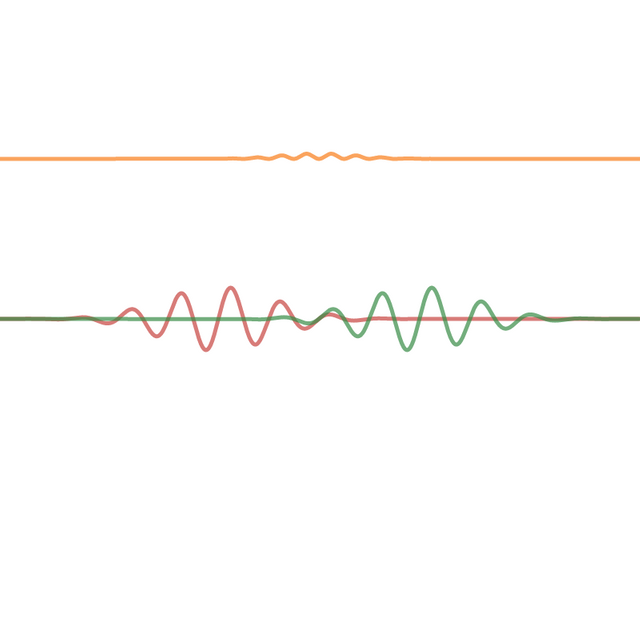 | 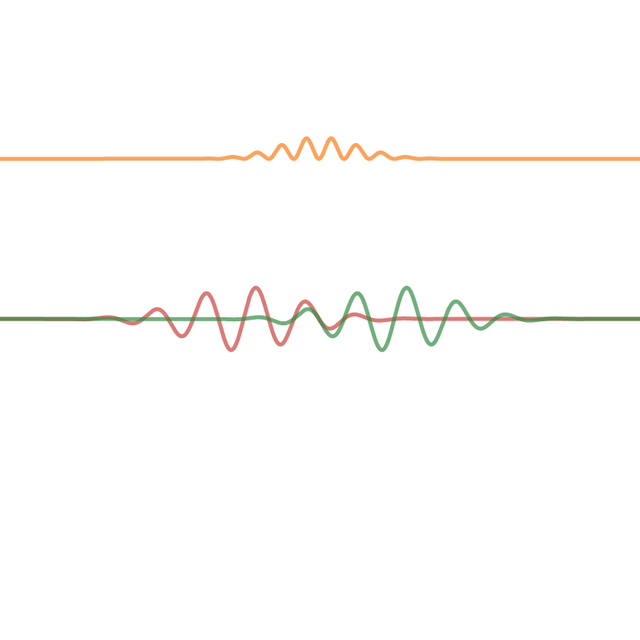 |  |
|---|---|---|
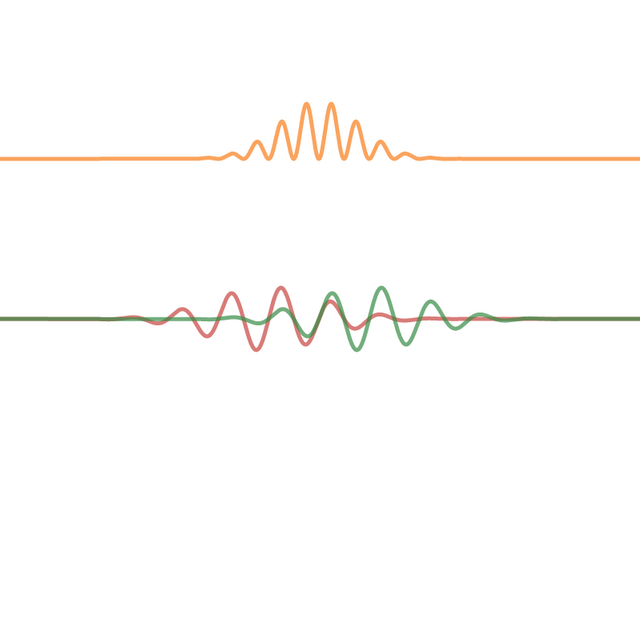 | 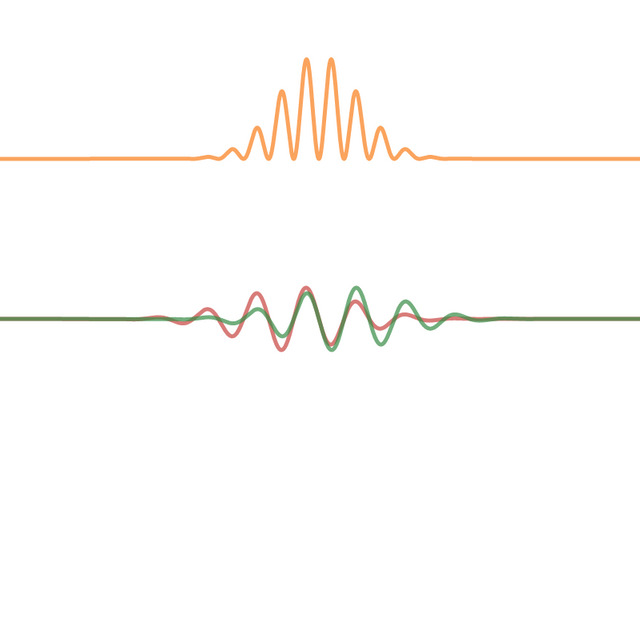 | 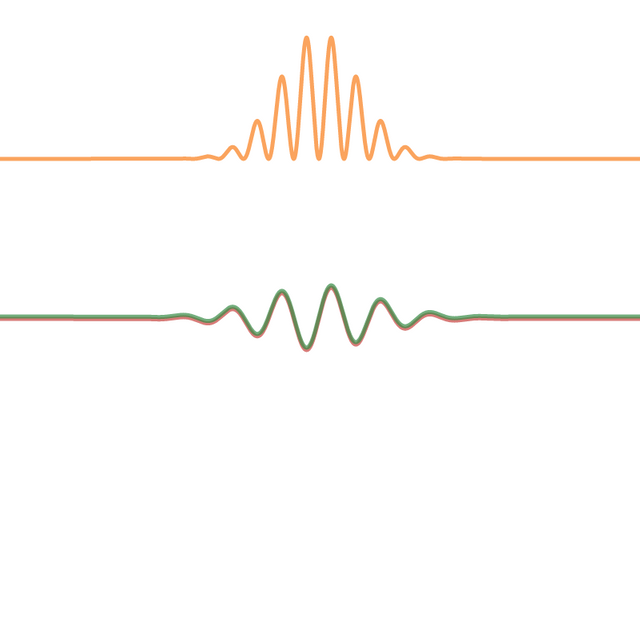 |
All diagrams generated with Desmos Graphing Calculator.
From the above illustrations one can observe the following.
Firstly the multiplication of both waves as time progresses result in another wave whose frequency is twice the frequency of the original waves 2ν (if you look closely the orange wave has twice as many peaks as the green and red waves).
Secondly, in the above case the resulting wave is stationary. That is, it doesn't have any velocity.
Thirdly, as the waves pass each other the diagram sequence is reversed and the wave amplitude resulting from the multiplication of A and B waves goes back to 0.
The most interesting question that follows is, how does the orange wave affect field C (remember, we assume here that A, B and C are all interacting fields)?
The answer depends greatly on the natural frequency of field C and the original waves A and B frequency.
I explained in my previous post that each type of particle is associated with a minimum quantum of energy in the corresponding field which takes the form of a wave oscillating with minimum frequency.
This minimum frequency is the natural frequency of the field.
It turns out that a new wave in field C may be persistently created if the sum of the A and B wave frequencies is the natural frequency of field C.
The above is due to a phenomenon of resonance whereby the periodic excitation of field C occurs at a rate equals to its natural frequency.
Let's take a similar phenomenon in the macroscopic world. I will use Matt Strassler analogy of the child on a swing.
Imagine that you are pushing a child on swing.
The swing has a natural frequency and oscillates with that frequency, independently on the amplitude of the swinging motion (how high the child goes).

[Image credits - Pixabay]
The most efficient way to keep the swing going is for you to give the child a push at the same frequency, that is pushing the child each time he goes back to a given position.
This is what resonance is - a regular injection of energy into a system at a rate matching the natural frequency of the system. The resulting transfer of energy is highly maximized as shown on the following diagram:
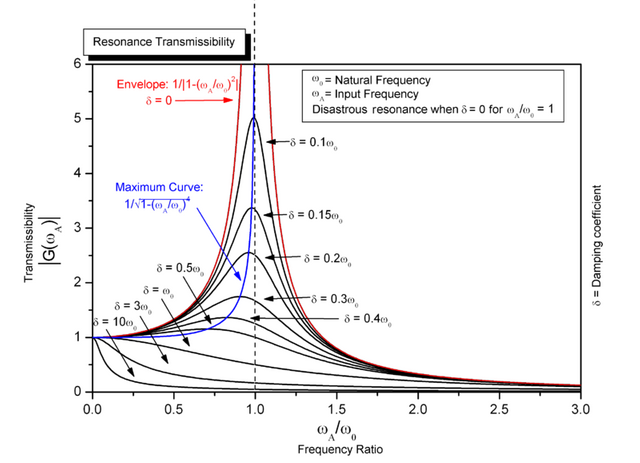
[Image Credits - Wikipedia]
Now imagine that the orange wave above results in a periodic injection of energy into field C. That is, each peak correspond to an excitation of field C.
If this excitation occurs in resonance with field C, then a new wave (particle) may appear in field C.
It can also be shown that if the original colliding particles both have the minimal frequency of their fields, then both particles will annihilate each other in the process!
This is an example of how QFT explains how two particles can annihilate each other and combine into a new type of particle!
Going Further
In the above section we have looked at a "basic" case whereby both colliding particles had same frequency and exact opposite momenta.
We also considered the case where the sum of both frequencies correspond to the natural frequency of field C.
What if the sum of A and B frequencies is lesser than this C natural frequency? That is, what if this sum is off-resonance with field C?
In that case the two colliding particles will result in smaller, irregular excitations of field C, a temporary disturbance of field C.
This disturbance corresponds to what physicists describe as virtual particles (though these are not particles at all).
Virtual particles may have smaller or higher mass than their field "real" particles and disappear extremely quickly.
Furthermore, they do not need to meet the same quantum requirement as their "real" particle counterpart.
These virtual particles may have important consequences such as changing the motion of the original particles in field A and B.
They can also result in the emergence of new waves (particles) in other fields (say, D and E).
Virtual particles are key to understand the fundamental forces described in the Standard Model.
Finally, what if the original particles in field A and B don't have the same frequency?
In this case one can show mathematically that a new particle in field C can still be created under the right resonance condition and that this particle C won't be stationary.
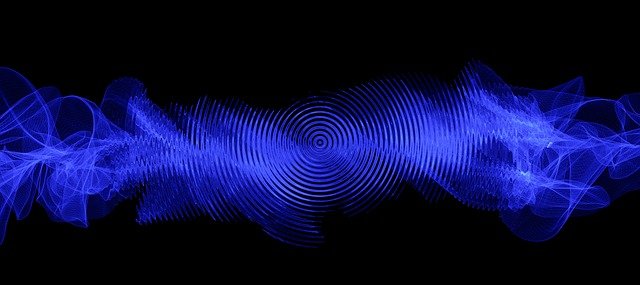
[Image credits - Pixabay]
Conclusions
I hope that this post gave you some idea of what QFT is about and how much of the mathematics worked on by physicists involve the motion and combination of waves and energy transfer between fields.
We saw how QFT describes particle annihilation / creation as the combination of waves and the excitation of other fields.
We learned about how the resonance phenomenon is a key factor in the emergence of new particles or how off-resonance conditions can give rise to temporary virtual particles in other fields.
The amount of phenomena that can occur as waves interact is large and this post represents only a tiny amount of what can happen in nature.
I hope however that it gives the reader a better understanding of what is involved in QFT and how complex reactions produced in accelerators such as the LHC can be explained.
Other posts in this series
- Journey through the understanding of particle physics - One
- Journey through the understanding of particle physics - Two bis
- Journey through the understanding of particle physics - Three
Hi @irelandscape!
Your post was upvoted by utopian.io in cooperation with steemstem - supporting knowledge, innovation and technological advancement on the Steem Blockchain.
Contribute to Open Source with utopian.io
Learn how to contribute on our website and join the new open source economy.
Want to chat? Join the Utopian Community on Discord https://discord.gg/h52nFrV
Very nice summary. No comment this time :)
Thanks! :-)
One of my fave subjects I’ve always been a sucks for the collapse wave function
Him thanks for your comment.
I don't think the waves referred in this post are the same as the wave function.
These two types of waves could well be related in some ways that I'm not aware of.
You know what I realised there not, but they actually bloody could be I never looked at the collapse in a physical wave for wave sense. I'm actually going to look further into this cheers!!
Yeah, this is a good way of explaining wave-particle duality as the localized interaction of fields.
I read a website a long time ago by a guy who explained why the term virtual particle is so misleading. There are no 'particles' when you talk about virtual particles, just temporary disturbances in the fields.
This does help to explain observations in quantum physics where particles seem to disappear and then reappear somewhere else. I find with really difficult concepts I need to be exposed to it a few times before it starts to make sense to me.
You talked about how 'how two particles can annihilate each other and combine into a new type of particle!' is an example of this when one neutrino oscillates into a different type of neutrino?
These are not easy concepts to accept because we are so used to comprehend the world around us based on our everyday observations.
But I suppose that, when you think about it, an energy wave is no more mysterious than an indivisible corpuscle of matter.
The one nice thing about accepting that particles are actually energy waves is that it becomes easier to understand how they can combine, annihilate, decay, etc.
One of the hardest things for us, laymen, to understand I think are the particle properties. For example, what is mass? We find it difficult to separate mass from the concept of weight in our head but actually mass, like electric charge, is just another property that has a specific value and affects how particles behave.
Rest mass on its own is not something you can weigh. You need a curvature of the gravity field for that.
I wouldn't be the right person to ask for specific examples but I'm aware of a few. For example the annihilation of a quark and antiquark would produce a couple of photons.
Thanks for your feedback!
I remember in science class in school we always learned that things were made of smaller and smaller particles. That, plus the world around us as you said, gave me a firm idea that it's all little solid things. Fields do seem to do a better job of explaining some observations though. Great series for readers like me without much physics knowledge:)
Congratulations! Your post has been selected as a daily Steemit truffle! It is listed on rank 9 of all contributions awarded today. You can find the TOP DAILY TRUFFLE PICKS HERE.
I upvoted your contribution because to my mind your post is at least 15 SBD worth and should receive 137 votes. It's now up to the lovely Steemit community to make this come true.
I am
TrufflePig, an Artificial Intelligence Bot that helps minnows and content curators using Machine Learning. If you are curious how I select content, you can find an explanation here!Have a nice day and sincerely yours,

TrufflePig